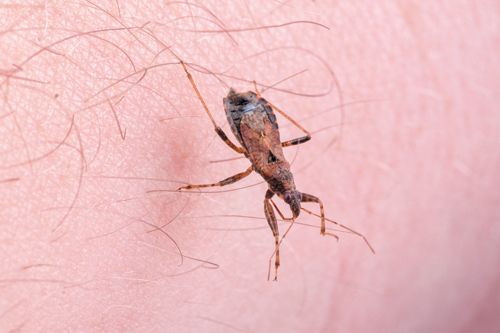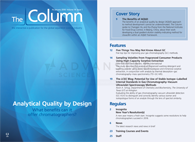Tackling Chagas Disease With Proteomics and LC–MS/MS
Researchers have developed a proteomics‑based approach, using liquid chromatography tandem mass spectrometry (LC–MS/MS), to identify the food sources of the Chagas disease vector Triatominae insects.
Photo Credit: kentoh/Shutterstock.com

Researchers have developed a proteomicsâbased approach, using liquid chromatography tandem mass spectrometry (LC–MS/MS), to identify the food sources of the Chagas disease vector Triatominae insects (1).
Vector-borne diseases have complex transmission dynamics and fully understanding these are critical for the creation of evidenceâbased vector control programmes. In the case of Chagas disease-a parasitic disease endemic in many parts of Latin America-its transmission dynamics focus largely around the 140~ species across the Americas capable of acting as a vector. Occurring primarily in communities with limited resources and traditional houses made of natural materials, Chagas disease claims the lives of an estimated 12,500 people annually, with 8–10 million infected and over 60 million at risk of infection (2–4). It can take up to 20 years to develop diagnosable symptoms once infected with oneâthird of the infected developing lifeâthreatening illnesses.
Unfortunately, despite large numbers at risk, treatment options for the disease are currently limited because there is no effective vaccine, and the drugs that are available are accompanied by considerable side effects. This places prevention at the heart of any strategy to reduce the disease’s prevalence, and an effective prevention strategy relies heavily on vector control. However, to effectively reduce the bug vectors of this parasite, the transmission dynamics must be well understood, including the blood meal sources they feed on. A complete understanding of this can be challenging for many reasons, and the techniques currently employed for studies can be stretched. DNA sequencing is regularly used, however, the technique works best with high-quality DNA, which is not always available, and although amplification steps can alleviate this strain, it can also lead to false positives from contaminating DNA not derived from the blood meal itself.
To address these issues researchers turned to LC–MS/MS and the identification of the highly stable haemoglobin proteins, which are some of the most abundant proteins in any blood meal. The high precision of the technique can accurately identify haemoglobin peptide sequences, many of which are unique to specific vertebrate classes, orders, families, genera, and even species (1). Furthermore, the technique does not rely on the creation of spectral libraries, instead using publically available DNA and protein sequences.
The results of the study indicated that the approach could be used as a valuable tool when attempting to understanding the sources of blood meals in vector control strategies. The method provided data on the species the blood meal derived from effectively and demonstrated proof-of principle. “We were happily surprised at how well the technique works,” said Lori Stevens, University of Vermont, USA. “We are currently working on a second paper reporting some of those details,” continued Stevens. The researchers highlighted the upfront costs of LC–MS/MS platforms as a potential stumbling block for this technique’s widespread use, but running a sample is relatively inexpensive following the initial purchase. Despite this, the sensitivity of LC–MS/MS reinforces its position as a valuable methodology when identifying the source of triatomine insect vector blood meals.
For more information on Chagas Disease, please visit: www.chagasecohealth.com
References
- J.I. Keller, B.A. Ballif, R.M. St. Clair, J.J. Vincent, M.C. Monroy, and L. Stevens, PLoS ONE12(12), e0189647 (2017).
- C. Bern, S. Kjos, M.J. Yabsley, and S.P. Montgomery, Clinical Microbiology Reviews24(4), 655–81 (2011).
- E. Dumonteil and C. Herrera, PLoS Neglected Tropical Diseases 11(4), e0005422 (2017).
- A. Rassi and J.A. Marin-Neto, The Lancet 375(9723), 1388–40 (2010).













